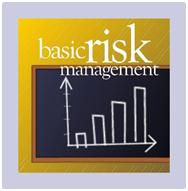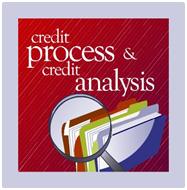After a number of requests for an offline, easier to use, read and work with electronic version of our courses, Learning Corporate Finance online course inventory store is now live. Our most popular and visited courses, from ALM to Corporate Finance, from Value at risk to Interest Rate Options are now all available for sale as PDF files with supporting excel examples. The list of current inventory includes
Corporate Finance: First Course
Master Class: Calculating Value at Risk
Master Class: Credit Analysis
Master Class: Credit Process
Master Class: Derivative products
Master Class: Ratio Analysis
Pricing Interest Rate Swaps – The valuation and MTM course
The Derivatives Crash Course for Dummies
Asset Liability Management (ALM) – The ALM Crash course and survival guide
Interest Rate Options – Pricing Caps and Floors
Save a few dollars by picking our secured, non-printable, student pdf editions. Pay a few dollars more for the privilege of printing and sharing. Taking a peek at our excel files will also set you back by (you guessed it) yet more dollars. And if you dislike our capitalist initiatives to earn a few cents on the side and would like to have every thing for free, the html editions of the courses are available for free (click on the course images or the html links). The MS Excel files work through the same examples included in the free online courses.
The Corporate Finance and Ratio Analysis courses include a full solved case. The Corporate Finance case is based Electronic Arts (EA), while the Ratio Analysis case works with Office Depot (ODP) and Staples (STPLS). The Value at Risk (VaR) course includes a case on Risk management within the Petrochemical industry. The Interest Rate Swap, Interest Rate Option course includes solved examples for pricing IRS, CCS, Interest Rate Caps, Interest Rate Floors and Range Accrual Notes. The ALM (Asset Liability Management) course includes worked example for calculating Interest Rate Gaps, Market Value of Equity, Cost to Close and Earning at Risk report templates. Additional supporting material for ALM includes a Duration (Macaulay Duration, Modified Duration, Effective Duration), Convexity (Convexity correction, Convexity) excel example
For less than the price of a Starbuck Frap, Mocha or Expresso, here is the opportunity to take our PDF and Excel samples, examples and calculations home with you. Please note in the interest of full disclosure these are academic, illustrative learning tools, not full blown nuclear powered pricing models. Please do your own due diligence and read our waivers and disclosures before you make life and death decisions based on the opinions of random strangers.
Asset Liability Management
| Course Title |
Buy Print or Non Print Version |
| Asset Liability Management – Crash Course | |
| Asset Liability Management – Crash Course – EXCEL Examples |
Capital Adequacy Assessment
| Course Title |
Buy Print or Non Print Version |
| ICAAP Sample Report Template & Executive Summary |
Corporate Finance
| Course Title |
Buy Print or Non Print Version |
| Corporate Finance – First Course – Includes case study | |
| Ratio Analysis – Includes 2 case studies |
Credit Process & Analysis
| Course Title |
Buy Print or Non Print Version |
| Credit Analysis – First Course | |
| Credit Process |
Derivatives
| Course Title |
Buy Print or Non Print Version |
| Derivative Pricing – Binomial Trees | |
| Derivative Pricing – Binomial Trees
EXCEL Example |
|
| Derivative Products | |
| Pricing IRS – Module I – Term Structures | |
| Pricing IRS – Module I – Term Structures
EXCEL Example |
|
| Pricing IRS – Module II – IRS and CCS | |
| Pricing IRS – Module II – IRS and CCS
EXCEL Example |
|
| Pricing Interest Rate Options – Module III | |
| Pricing Interest Rate Options – Module III EXCEL Example | |
| Terminology Crash Course |
Value at Risk
| Course Title |
Buy Print or Non Print Version |
| Calculating Value at Risk
Includes case study |
|
| Calculating Value at Risk
EXCEL Example |
Computational Finance – EXCEL Examples
| Course Title | Buy Print or Non Print Version |
| Duration Convexity Example | |
| Valuing Options – Black Scholes Example | |
| Valuing Options – Binomial Tree Example |
Downloadable Courses Table of Contents for
Asset Liability Management – Crash Course
Corporate Finance – First Course
Ratio Analysis
Credit Analysis – First Course
Credit Process
Pricing Interest Rate Swaps – Module I – Term Structures
Pricing Interest Rate Swaps – Module II – IRS & CCS
Pricing Interest Rate Options – Module III
Value at Risk Table of Content
| Asset Liability Management | First Course in Corporate Finance |
| Asset Liability Management
Introduction Interest Rate Risk Liquidity Risk Duration and Convexity Duration Macaulay Duration Modified Duration Convexity Approximate price change Terminology: Modified and Effective Value at Risk (VaR) Variance Covariance Approach Determining SMA volatility Determining EWMA Volatility Determining SMA and EWMA daily VaR Historical Simulation Method Determining Historical Simulation daily VaR Scaling of the daily VaR ALM Risk Measurement Tools Fall in Market Value of Equity Step 1: Determine look back period Step 2: Data collection Step 3: Calculated the return series Step 4: Calculate the days to maturity/ days to reset Step 5: Calculate individual weights for each asset and liability Step 6: Obtain return series for each individual asset/ liability Step 7: Calculate weighted average return series for assets and liabilities separately Step 8: Compute VaR Step 9: Compute the MTM weighted average yield to maturity (YTM) Step 10: Compute Rate Shock Step 11: Compute the weighted duration of assets and liabilities Step 12: Fall in MVE Earnings at Risk Step 1: Determine look back period Step 2: Data collection Step 3: Calculated the return series Step 4: Identify assets, liabilities & off balance sheet (OBS) instruments to be included in the calculation Step 5: Calculated expected cash flows and days to maturity (DTM) Step 6: Slot the cash flows according to DTM Step 7: Compute weights of each sub bucket with respect to overall bucket Step 8: Compute correlated return series based on the weights calculated in Step 7 above Step 9: Compute rate VaR Step 10: Compute Rate Shift/ Shock Step 11: Compute the change in rate sensitive assets/ liabilities/ off- balance sheet items Step 12: Compute the on-balance sheet and cumulative gaps for each defined bucket Step 13: Compute total EAR for the given confidence level Cost to Close Step 1: Define buckets for each period going forward from the revaluation date Step 2: Calculate instalments due to be paid/ received and slot into relevant bucket Step 3: Summation of values for each bucket Step 4: Calculate the difference between assets and liabilities Step 5: Choose the interest rate basis to be used in the cost to close calculations Step 6: Compute cost to close Rate Sensitive Gap Step 1: Define the time buckets Step 2: Classification of on- and off- balance sheet items Step 3: Slot items into relevant time buckets Step 4: Calculate rate sensitive gap Step 5: Calculate off-balance sheet gap Step 6: Calculated interval gap Step 7: Calculate cumulative gap Price Sensitive Gap Liquidity Gap Net Interest Income (NII) at Risk Duration Gap Analysis Applications Bank Duration matching/ immunization Pension Funds and Insurance Portfolio dedication Other Liquidity Risk Measurement Tools Liquidity Ratios and Analysis Current Ratio Quick Ratio Unused lines of credit Borrowing/ Debt-to-Equity Ratio Net Working Capital Ratio Loan-to-Deposit Ratio Loan- to- Asset Ratio Liquidity Management Setting limits for liquidity risk Cash flow mismatch or gap limits Maturity Limits Target Liquid Reserves Concentration Limits Contingent liability limit Review Exception handling Contingency Funding Plan General requirements for a liquidity contingency plan Specific requirements for a liquidity contingency plan Liquidity enhancement tactics For Systemic crisis For company specific crisis Disclaimer
|
Session Zero – Learning Objectives
Session I – Financial Concepts Definitions Operating Cycle Books Liquidity Financial Structure Maturity Forms of Ownership Sole Proprietor Partnerships Corporations Chapter S Limited Liability Companies (LLC’s) Financial Statements The Balance Sheet The Income Statement Statement of Cash Flows The Accounting Notes The Right Way Accounting Note A – Product Sales Accounting Note B – Property Plant and Equipment Session II – Review of Financial Statements Assets Current assets a) Cash and cash equivalents b) Accounts receivable & Inventory Property Plant & Equipment Depreciation Liabilities Current Liabilities Lines of credit / overdraft facilities at banks Short term loans and debt Accounts payable Accrued benefits & obligations Current portion of long-term debt Long Term Liabilities Net working capital Equity Shares Authorized Shares Issued Shares Treasury Shares Preferred Shares Common Stock Retained Earning Bankruptcy Income Statement Session 3 – Risk and Return Risk & Reward Important Points to remember Return Return on Equity Return on Invested Capital & ROE Payback period. Session IV – Time Value of Money: An Overview Discount Rate Compounding Time Value of Money Examples Present Value in Action Step One – Calculate the Discount Factors for 7 years Step Two – Calculate the PV of investment stream Step Three – Calculate the PV of the return stream Step Four – Calculate Net Present Value Step Five – Analyze results Internal Rate of Return (IRR) Internal Rate of Return (IRR) and comments Putting it all together Examples Session V – Opportunity Cost and Cost of Capital Opportunity Cost & Cost of Capital Scenario 1 – Understanding Opportunity Cost Scenario 2 – Understanding Cost of Capital Weighted Average Cost of Capital (WACC) Step A – Simple Average Calculation Step B – Issues affecting interest rate on debt. 1) Government Debt Rate 2) Credit Risk Example Step C – Issues affecting required rate of return on equity Risk free rate of interest Market rate of return Beta Risk Premium Session VI – Case Study: Electronic Arts Case Study Step One – Data Gathering Step Two – Industry Analysis Step Three – Management Discussion and Analysis Step Four – Pre Analysis Step Five – Setting Assumptions Step Six – Projection of pro-forma statement Projecting the income statement Projecting the Balance Sheet Equity Calculating free cash flows Step Seven – Cost of capital What is the right risk free rate of return? What is the right value for the risk premiums? Weighted Average Cost of Capital (WACC) Step Eight – Valuation Basic Principles Part I Part II Step Nine – Reality checks Exhibits Electronic Arts – Basic Information Appendix A Disclaimer |
| Ratio Analysis | Credit Analysis |
| Ratio Analysis
Understanding the Language Insolvency Fixed & Variable Costs and Cost Functions Relevant range of production Dividends Net Working Capital Marketable Securities Debt Why is leverage important? Debt: Explanations and Types Stakeholders Managerial Efficiency (ME) Fundamental Analysis Introduction to Ratios Ratios – Comparative Analysis Industry Averages Trend Analysis The many faces of ratio analysis Liquidity, Leverage, Profitability and Productivity Liquidity Leverage Productivity Profitability Case Study 1 – Office Depot Overview Financial Condition Review Ratios – Quick Reviews Leverage Ratios Productivity or Turnover Ratios Profitability Ratios Industry review and a first look at ratios Industry Analysis Liquidity Ratios Current Ratio Quick ratio Leverage Ratios Debt to Equity Ratio Debt to Total Assets Times Interest Earned (Coverage) Ratio Fixed Charge Coverage Ratio Productivity Ratios Inventory Turnover Asset Turnover Average Collection period Accounts Receivable Turnover Profitability Ratios Gross Profit Margin Operating Profit Margin Net Profit Margin Return on Assets (ROA) Return on Equity (ROE) Case Study 2 – Staples & Office Depot: Comparative Ratio Analysis Staples – Overview Financial Condition Review Liquidity Ratios – Comparison Current Ratio Quick Ratio Leverage Ratios Debt to Equity Ratio a) Long-term Debt and Equity b) Current Liabilities vs. Equity Debt to Total Assets Times Interest Earned (Coverage) Ratio Fixed Charge Coverage Ratio Productivity Ratios Inventory Turnover Ratio Fixed Asset Turnover Total Asset Turnover Average Collection Period Accounts Receivable Turnover Profitability Ratios Gross Profit Margin Operating Profit Margin Net Profit Margin Return on Assets (ROA) Return on Equity (ROE) Basic Earning Power Ratio Conclusion Disclaimer
|
Credit Analysis
Introduction Leverage Why is leverage important? Fixed & Variable Costs Relevant range of production Fixed and variable costs and their impact on leverage Breakeven and Leverage Breakeven Analysis Margin of Safety Key Takeaway Fixed Costs and Operating Leverage Operating Leverage Degree of Operating Leverage The downside of operating leverage Financial Leverage Introducing Financial Leverage Degree of Financial Leverage The downside of Financial Leverage Combining Financial and Operating Leverage Disclaimer |
| Credit Process | Pricing Interest Rate Swaps – Term Structure I |
| Credit Process
Mindset Intent Classification Pricing Fit Understanding the language Capital Structure Debt (Leverage) Why is leverage important? Maturity Default Interest Commitment Fees Credit Culture Credit risk Liquidation costs Creditworthiness Work-out and Charge off Owners’ Equity Bankruptcy Stakeholders Credit Limit Syndicate Basis Points Collateral Why do businesses borrow money? Why does the firm need money, and what is it going to do with it? Why is the firm borrowing money? Sources of Repayment Lending Products Line of Credit Revolving Credit Bills discounting Term loans Consumer Loans Trade credit Bonds Review Credit Risk & Credit Analysis Why is credit analysis important? Credit Risk and Credit Spreads Credit Analysis Process Setting Objectives and guidelines Gathering information Processing information Presenting information Decision-making Documentation Credit Culture and Information Gathering Foundations Information Gathering – Foundations Business – Need & Risk Repayment Sources Industry Profile Management & Track Record Information Gathering and Processing Information Gathering – Data Exhibit One – Balance Sheet Exhibit Two – Income Statement Exhibit Three – Free Cash Flows Exhibit Four – Pre Formatted Financial Analysis Information Processing Pre Processing Preparation of Credit Memorandum The Credit Decision Accept / Reject Term Sheets Loan Pricing Compliance & Documentation Credit Decision – Factors Industry Analysis Business Analysis – Other Qualitative Factors Business Factors Business Risk Management/ Ownership Quality Credit Rating Agencies Importance of Cash Flow Analysis in Credit Analysis Cash Flow Statements Operating Activities Financing activities Investing activities Analyzing Cash flow Statements: Examples Example 1- Office Depot Example 2 – Will and Can Inc Consistency Seasonality or Cyclicality of Cash Flows Disclaimer
|
Basics
Definitions Cash flows Discounting Cash flows Spot Rates Forward Rates Short rates Yield to Maturity Term structure of interest rates Forward Rate Agreements Forward Contracts Swaps Interest Rate Swap Currency Swap Other Swaps Fixed for fixed currency swap Floating for floating currency swap Cross-currency interest rate swap Step-up Swaps Amortizing Swaps Forward or Deferred Swaps Compounding Swaps LIBOR-in- Arrears Swap Constant Maturity Swap Constant Maturity Treasury Swap Differential Swap or Quanto Variance or Volatility Swap Equity Swap Commodity Swap Asset Swap Accrual Swap Cancellable Swap Extendable Swap Pricing Interest Rate Swaps – Process Defined Modelling the Term Structure, Zero Curve and Forward Curve Defining the Par Term Structure Step 1: Select an appropriate term structure Step 2: Extending the term structure Step 3: Creating a default term structure Deriving the Zero Curve Step 4: Develop the cash flows matrix Step 5: Developing the discounted value of cash flows matrix and the zero curve Deriving the Forward Curve Step 6: Deriving forward rates Disclaimer |
| Pricing IRS, CCS – II | Pricing Interest Rate Options – III |
| Pricing and Valuation
Pricing Interest Rate Swaps (IRS) Pre-requisites Pricing Coupon Swaps or Fixed for Floating Swaps Term sheet Step 7: Determine the coupon paying/ receiving periods Step 8: Determine the zero coupon rates applicable Step 9: Determine the forward rates applicable Step 10: Determine the cash flows Step 11: Discount the cash flows Step 12: Calculating the price of the IRS Pricing Basis Swaps or Floating for Floating Swaps Term Sheet Pricing Pricing Cross Currency Swaps Fixed for Fixed Currency Swap Floating for Floating Currency Swap Amortizing Floating for Floating Currency Swap Disclaimer |
Pricing Interest Rate Options
Pre-requisites Caps and Floors Cap Floor Cap-Floor Parity Accrual Swaps Method 1 Method 2 Value of regular swap A second look at Method 1 A second look at Method 2 Range Accrual Note Commodity Linked Note Disclaimer |
| Value at Risk Crash Course | |
| Introduction
VaR Methods Variance Covariance Approach Historical Simulation Method Monte Carlo Simulation Quick Review Implementing VaR Methodology Setting the Scene · Sample Portfolio Preliminary steps VaR Approach Specific Steps Variance-Covariance (VCV) VaR · Determining Historical Simulation daily VaR Scaling of the daily VaR Caveats, Qualifications, Limitations and Issues Case Study – Risk for the Oil and Petrochemical Industry A Framework for Risk Management Risk Policy Good Data and a First Look at Models Models and Tools Metrics and Sensitivities Limits and Control Process · Operational (Exception or Management Action) Limits · Capital Loss & Stop Loss Limits · Inventory Age Limits · Concentration Limits · Transaction Limits · Exposure and Sensitivity Limits · Pre Settlement Risk (PSR) and Potential Future Exposure (PFE) Limits · Hierarchy of Limits Conclusion
|




